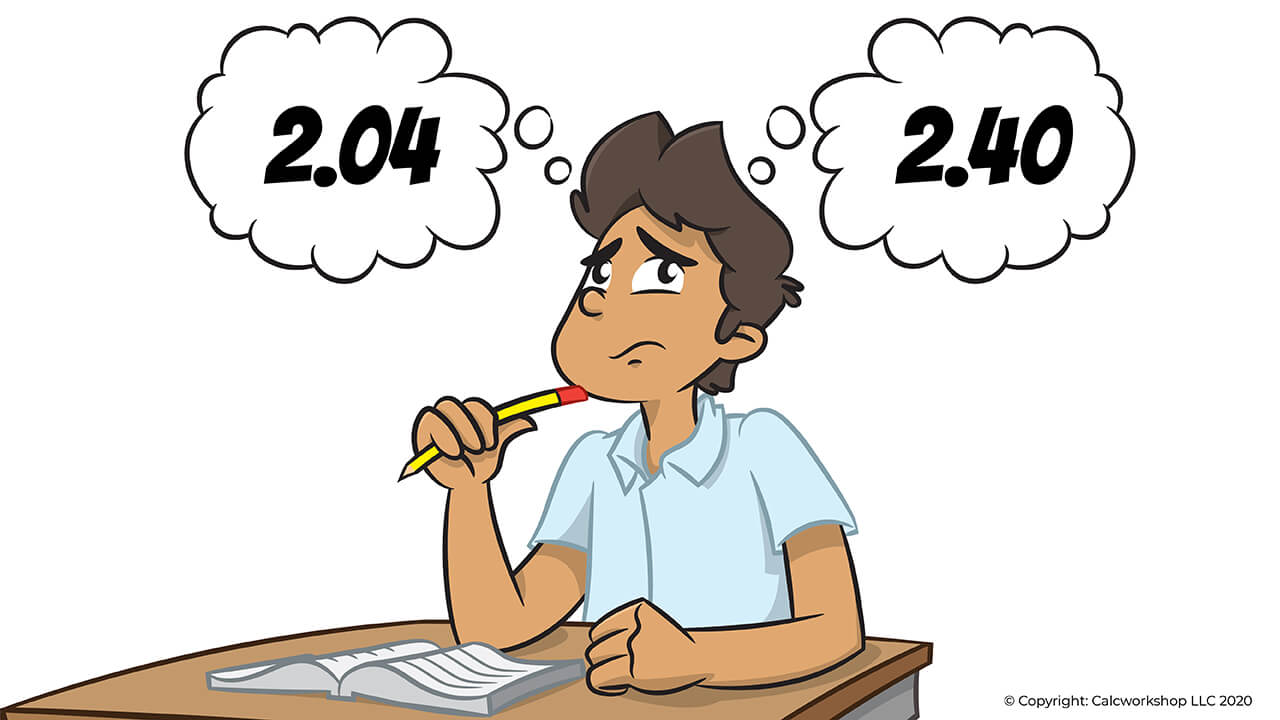Have you ever struggled to determine which decimal was bigger or smaller than another?

Comparing Decimals In Real Life
Look no further!
Because there’s an effortless method that you’ll learn today when it comes to comparing decimals.
First, the most important thing to know is that comparing decimals follows the same rules as how we compare whole numbers!
Inequality Symbols
And comparing any number starts with knowing our symbols.

Less Than, Greater Than, and Equal Signs
The big hint is to remember that the “arrow” ALWAYS points in the direction of the smaller number.
Now we’re ready to apply our inequality rules to decimals.
How To Compare Decimals
The rules for comparing decimal numbers is as follows:
- Compare the whole number part first (i.e., compare the digits in front of the decimal). If they are different, then compare the numbers as you would for any whole number. If they are the same, then go to the next step.
- Compare the tenths place. If they are different, then compare those numbers as you would for whole numbers. If they match, then move to the next digit.
- Compare the hundredths place. If they are different, then compare those digits as you would for whole numbers. If they match, then move to the next digit.
- Etc.
When there is no “matching” digit, or you reach the end of your number, then the decimals are equal.
But here’s a really big hint on how to make this whole process easier… copy the numbers in a column, making sure to line up the decimal places as discussed by Helping With Math.
Comparing Example
Let’s look at an example to help make sense of everything.
Your job is to write the correct comparison symbol for (< , > , = ) in the box.

How To Compare Decimals
That’s all there is to it!
Put Numbers In Order
But what do we do if we want to compare more than two numbers?
When this happens, we will be asked to order a list of numbers from least to greatest (ascending order) or from greatest to least (descending order).
The great thing is that the process is remarkably similar to how we compare for just two numbers — we just need to work through the process for multiple numbers.
Let’s investigate with a few examples.
The directions say, list the numbers in descending order. That means we want to write the numbers in order from greatest to least.

Ordering Decimals In Descending Order
That’s it. Not bad!
Worksheet (PDF) — Hands on Practice
One of the best ways to learn the material is to put a pencil to paper. And that’s what these worksheets come in to play.
Practice Problems
Step-by-Step Solutions
Together we will look at numerous examples of comparing and ordering decimals in either ascending or descending order. And we’ll even look at how to tackle some multiple-choice style questions, like those found on grade 5 and grade 6 end of course exams.
Comparing Decimals – Lesson & Examples (Video)
38 min
- Introduction to Video: Comparing Decimals
- 00:00:34 – What are the rules for comparing decimals?
- 00:05:36 – Compare decimals by writing <,>,or = in the box (Examples #1-6)
- 00:11:55 – Multiple Choice: Which of the following inequality statements are true? (Examples #7-8)
- 00:17:46 – List the decimals in order from least to greatest
- 00:24:21 – Order numbers from greatest to least (descending) or from least to greatest (ascending) order (Examples #10-12)
- 00:34:15 – Multiple Choice: which decimals are ordered from least to greatest (Example #13)
- Chapter Tests with Video Solutions
Get access to all the courses and over 450 HD videos with your subscription
Monthly and Yearly Plans Available
Still wondering if CalcWorkshop is right for you?
Take a Tour and find out how a membership can take the struggle out of learning math.